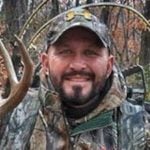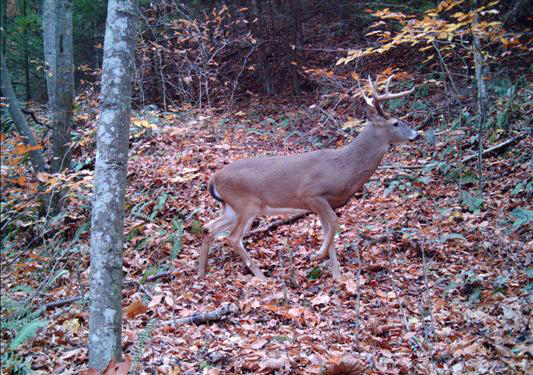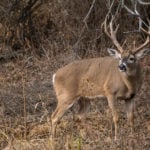LAST UPDATED: May 1st, 2015
While the focus of Part 1 was finding “Hot Spots” within big-timber, it does little good to know what they are if you don’t know when the best time to look for them is. In fact, scouting during the wrong time of year can actually hinder your chances of success.
Scouting Mistakes
For the longest time I waited until late summer before scouting for stand locations. There are several problems with this approach. First, the foliage is so thick that any sign that isn’t right under your feet, literally, will be hard to see. This makes investigating an area more time consuming; especially if you want to do it right. Perhaps the most damaging aspect of summer scouting is the fact that when you return to hunt the circumstances will probably be much different than they were just a month prior. (summer scouting in the Mid-west)
If you put off your big-timber scouting until everyone else is doing it your odds of success will drastically decrease. The early bird gets the worm.
You see, in big-timber, the conditions are always changing. Food sources change, as well as available cover. Both of these factors play a major role in how the deer in the area travel. If you are hunting from a stand that was hung based on sign that you discovered a month or more prior….well, you’re already behind in the game.
Scouting Done Right
My preferred method is to scout immediately following the close of the season. More importantly, I base a good deal of my efforts on locating stand sites that can be hunted during the rut the following year. Because food sources and available cover used for travel purposes change so often in a mountain setting, I would much rather formulate my schemes around the whitetails desire to breed. Doe bedding areas, big buck hide-outs, and other preferred rutting locations rarely change unless something drastic happens to the area. In my opinion, those are much more reliable pieces to the puzzle; as opposed to fickle summertime travel routes and food sources. (hunting over food plots)
Look for areas that naturally “pinch” deer movement down into a small area. If you can locate such places that are also adjacent to doe bedding areas…you’ve struck gold.
Attitude
The first thing you should do when preparing to tackle these big-timber areas is forget about what you see on television. If you go into this venture with the misconception that you will somehow find yourself consistently tagging bucks like those that are found on the highly managed properties the outdoor “pros” regularly hunt you’re wrong….dead wrong. Also, understand that your difficulty in killing 150 inch whitetails with regularity has little to do with your skill as a bowhunter, and more to do with genetics and geography. You simply can’t compare the nutrient-rich soil of the Midwest and the bucks it produces to the rough, mountain regions of the East and the whitetails that live there….it’s apples and oranges. (attitude today)
Bowhunting in “big-woods” is very unforgiving and requires a lot of hard work. However, the reward is much sweeter when tags are filled.
Sure, big mountain whitetails do exist, but there numbers aren’t nearly as prevalent as they are in other parts of the country. Therefore, your odds of encountering one will naturally be lower. Added to the equation is the fact that mature bucks are inherently harder to kill. You’re trying to put your tag on one under what are arguably the most extreme conditions in the sport. That is a task in and of itself. Instead of becoming disheartened, cherish every mountain whitetail for what it is….a trophy. Size doesn’t matter. Antler score doesn’t matter. In the end, the sacrifice and hard work it takes just to arrow one will make it every bit worthy of adorning your wall….regardless of what anyone else will tell you. (getting in shape)
If you’re going to conquer terrain like this…get in shape. It will make your time more enjoyable and your success rate will only go up.
Conclusion
Chasing whitetails in big-timber is the ultimate challenge. However, with the right approach, success can be had. Just remember, despite the vastness of wilderness tracts, there really is only so many places a whitetail will hide. Next time, I will take you through my process of scouting out a big timber area and where I place my own stands. Until then…Embrace The Grind, Reap The Reward.

 By
By 




